How and when to prune blackberries?
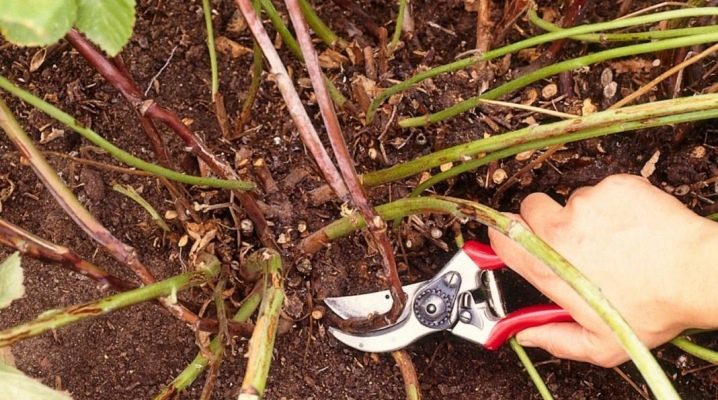
Blackberry is a demanding and capricious plant that, with good care, gives a bountiful harvest with juicy fruits. Care includes many simple and not very simple procedures: watering, feeding, preparing for winter. Pruning is another must-have way of caring for your horticultural crop.
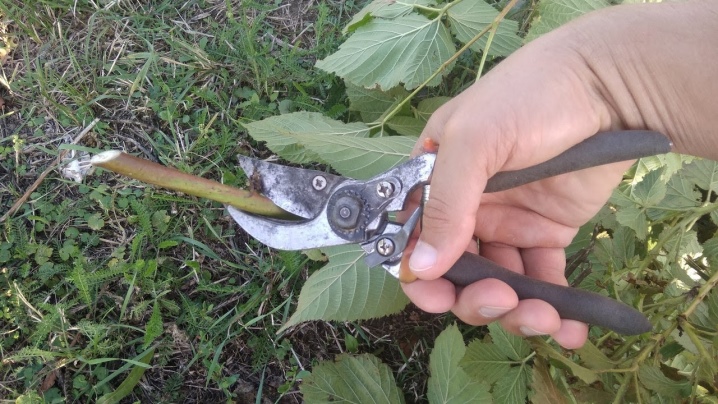
The need for pruning
A horticultural crop is capable of producing a crop only in the second year from the moment of planting. Prune the brambles immediately after harvesting to remove dead branches. The procedure is necessary to prevent the formation of a large number of old branches, which can hinder the growth of new ones. All varieties of blackberries are subjected to this procedure: curly, prickly, creeping, bush and others.
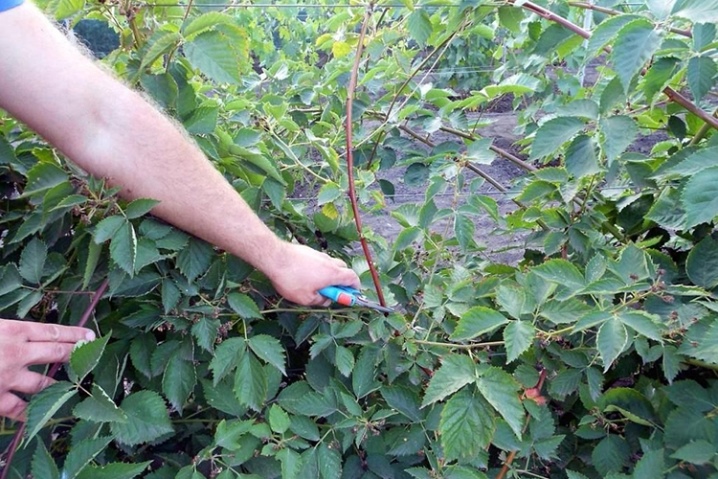
It is also necessary to take care of young lashes.
Pruning goals:
- ensuring full access of solar heat and light to the stem (if you keep the old branches, then in winter it will be difficult for sunlight to reach the middle of the stem);
- elimination of non-viable old branchesthat prevent the uniform supply of nutrients to young shoots;
- acceleration of maturation fruit by removing elements that form an additional shadow veil;
- obstacle to growth the number of harmful microorganisms on the bushes;
- faster ripening of fruits and increasing the degree of productivity;
- strengthening the plant due to the supply of the necessary micro and macro elements to each of its parts;
- solving the problem of caring for the plant in the future, because access to each part of the bush after pruning will become easier.

Let's consider the main types of pruning.
- Normalization of shoots... This is a way of removing excess branches immediately after fruiting, as well as getting rid of weak twigs. Depending on the variety of berries on the bush, it is customary to keep from 5 to 10 stems.
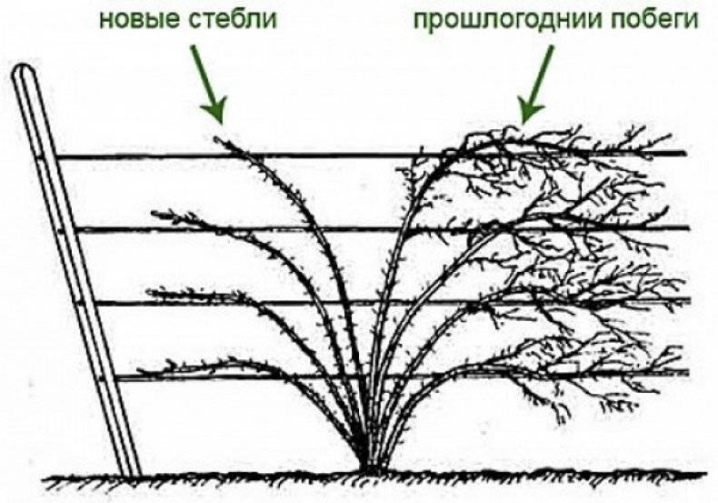
- Pruning... A method of reducing the upper part of the trunks at the end of the winter period in order to stimulate the formation of ovaries.
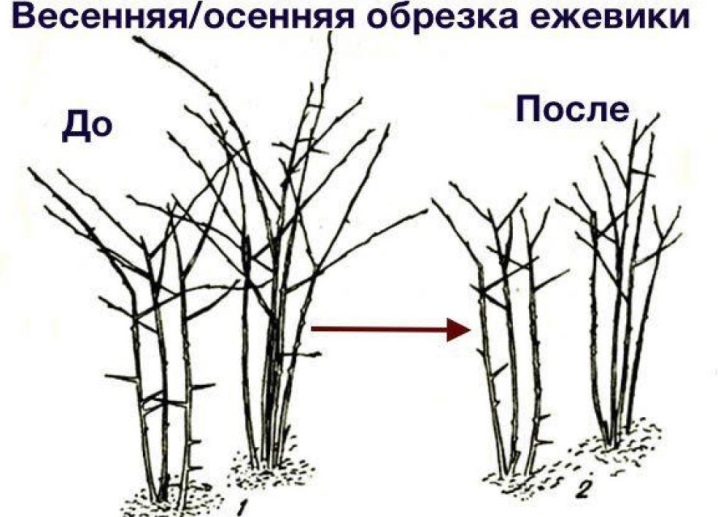
- Pinching... Summer work on the shortening of annual branches, which are especially important for thornless, erect and remontant varieties of shrubs.
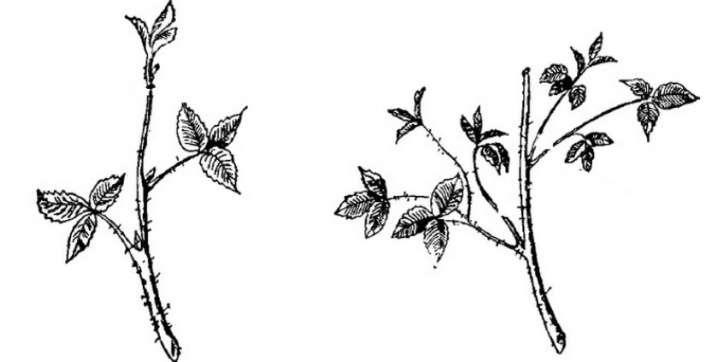
- Removal of overgrowth. Root growth that can damage the main root system is very important to remove. Thin twigs of such a growth are of no benefit to the plant, but they can weaken it. A pruner is suitable for removing such elements.

- Formation of a bush crown by fan or other methods with further garter on a support or trellis.
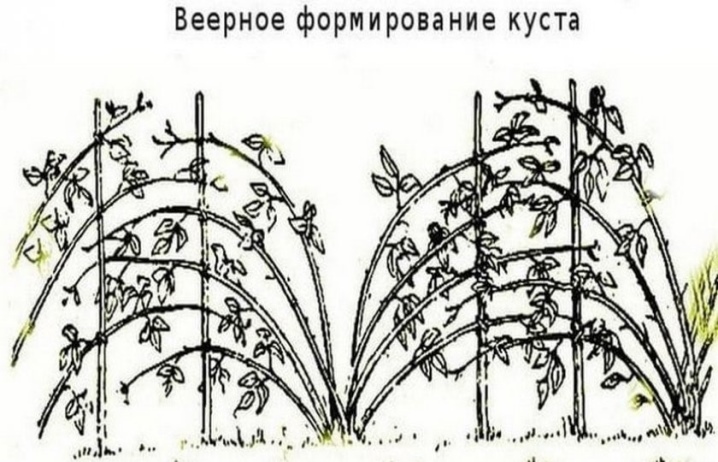
- The very formation of the future shrub, which depends on the type of plant.

Dates of the
It is best to prune the bush immediately after planting, in the first year after it takes root. It is important to keep no more than 28 cm above the ground. This method ensures the maximum possible growth of the plant's root system. When the cutting takes root, the growth of the shoots will reach a powerful level.
Since in the second year, berries are formed on old branches, it is important to tackle the tops in the spring. Top treatment will ensure high yields by stimulating the development of side branches.
In the spring
Spring is a good time to trim shrubs and remove excess elements. It is important to carry out spring pruning immediately after the snow melts, when the temperature does not rise above 7 degrees. During cool temperatures, the procedure will be safe for the plant.Pruning should be completed before the buds swell. The optimal pruning time in the southern part of the country is early March to mid-April. For the central part - the end of April. It is better for the northern regions to postpone the procedure until the end of the May period.
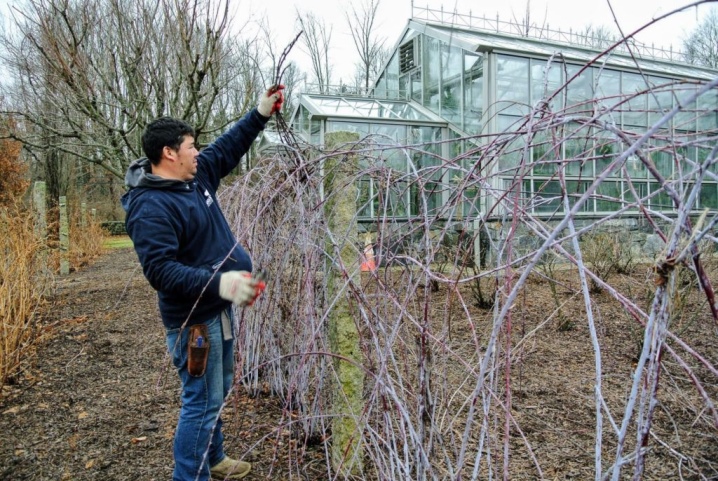
The final stage of the spring check of plants is the search and removal of fallen leaves from the ground near shrubs in order to prevent the formation of harmful bacteria.
In autumn
Autumn procedures for processing blackberries can be started immediately after fruiting. Mid September is the best time to prune most plant varieties. Some plants can be treated no earlier than October. How timely and quality pruning will be will affect the condition of the plant during wintering. A full-fledged sanitary pruning is carried out in the autumn. For this, a classic pruner and sharpened scissors are used.
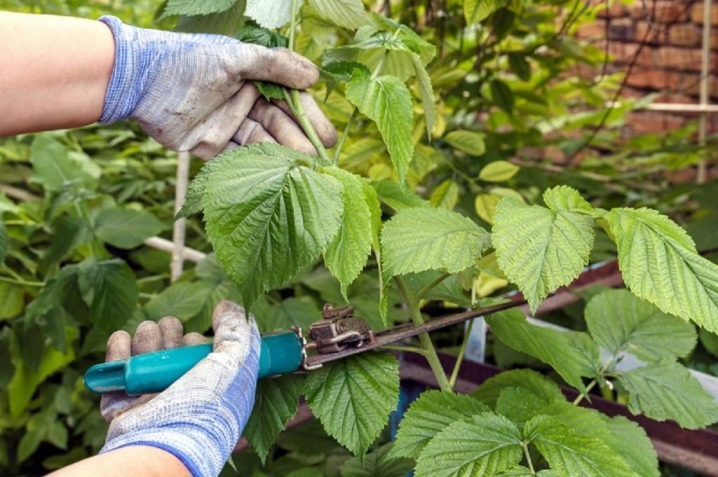
Stages of sanitary pruning of a shrub:
- elimination of old shoots that have already borne fruit (it is important to do this together with the roots);
- sorting young twigs and removing weakened, insufficiently ripe and thin elements;
- getting rid of dry, sick and damaged twigs;
- selection of no more than 10 high-quality branches and further removal of the rest in order to evenly distribute the load on the root system;
- shortening the shoots by 20 cm in the area above the bud discharge.
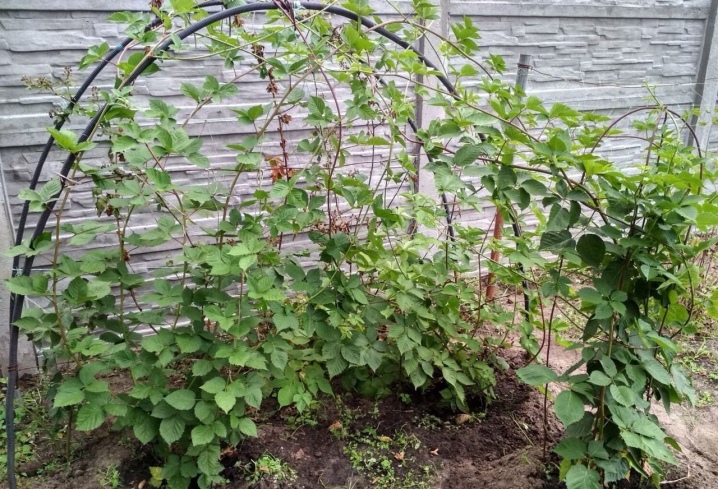
After carrying out the autumn work, the shrub can be left to winter. During the end of cold weather, the insulation should be removed and the plant should be checked for frozen or blackened branches. If they are found, you will need to delete a part or a whole branch.
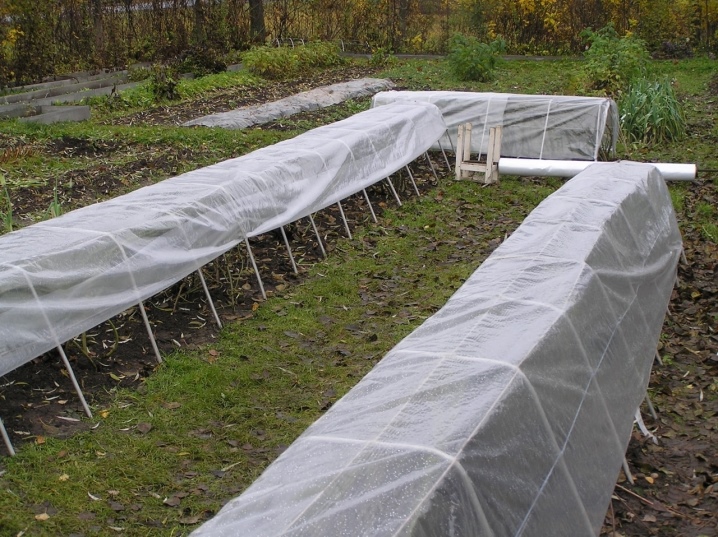
The total number of 5-6 healthy branches indicates a successful wintering.
Summer
New lashes that appeared in the spring should be removed from the ground as early as possible and secured with wire so that the fruits that appear do not start to deteriorate. If there are more than 5 formed growths, it is necessary to rid the shrub of unnecessary shoots. Summer processing of blackberries begins in mid-June and lasts until early July. When side plants appear on the main axes of the plant ahead of time (which, as a rule, are formed only in August), the tops of five leaves or buds should be removed.
Processing a plant in the summer is relevant for a number of reasons. Thanks to this treatment, a number of characteristics of the shrub are improved. A decrease in the number of buds improves the taste parameters of future berries, as well as an increase in their size. Moreover, processing has a positive effect on the process of collecting ripe fruits due to the lower location of the fruiting rods. Removing excess elements prevents overgrowth of shoots and also helps shrub regeneration.
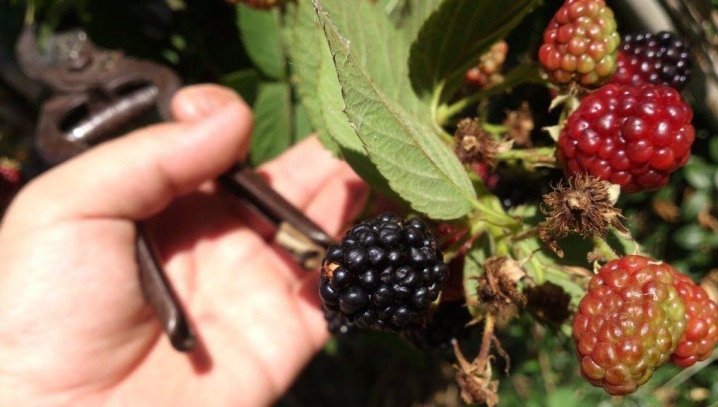
Previously, gardeners practiced removing a small number of premature shoots - about 2 buds. After detecting fungal infections of long loops, gardeners began to cut off shoots with a margin of 5 buds.
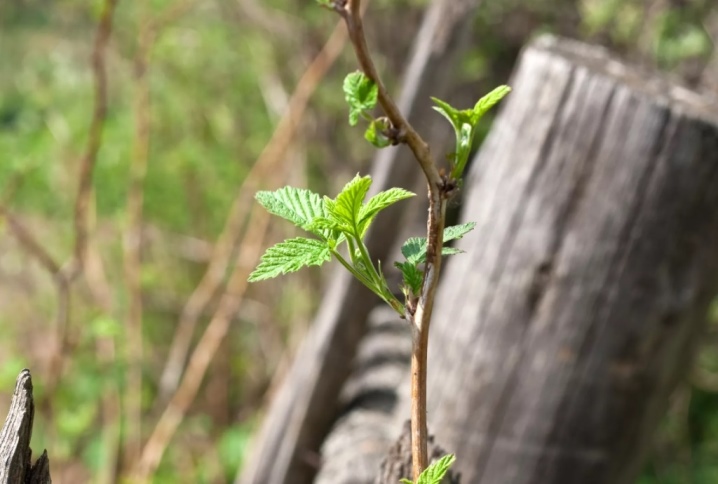
It is important to remember that even this way of removing the tops is not a guarantee of absolute protection against such damage.
Forming technology
Often the reason for the low popularity of blackberries among gardeners is the need for painstaking care of the plant. On the other hand, well-formed shrubs significantly reduce the likelihood of such an outcome. Even when harvesting, the well-groomed bushes do not scratch. To prepare for the autumn care of the plant, you should qualitatively form the blackberry bush at an early stage.
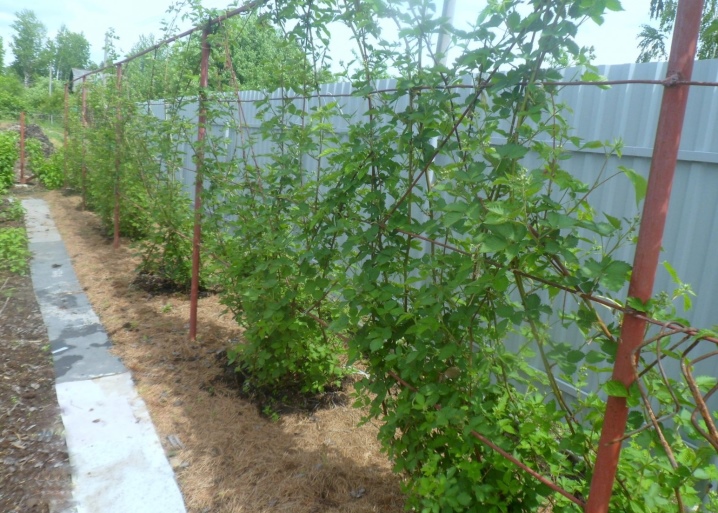
The type of formation is determined by the shape of the shrub. It is of two types: creeping and erect. The advantage of the first variety is the presence of flexible branches of great length. Such branches can be formed at will. The second variety, which is also called kumaniki, will be more fragile.
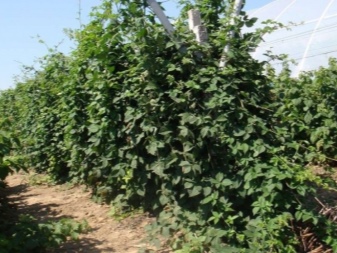
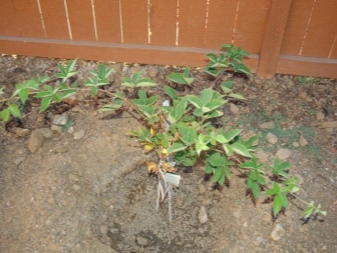
Popular varieties of upright blackberries:
- Wilson Earley;
- Kittatinny;
- Loughton;
- Darrow;
- Black Satin;
- "Eri";
- "El Dorado".

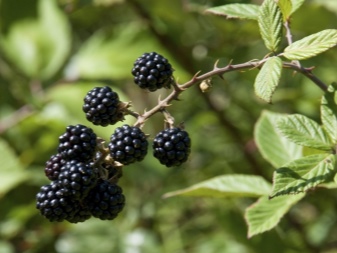

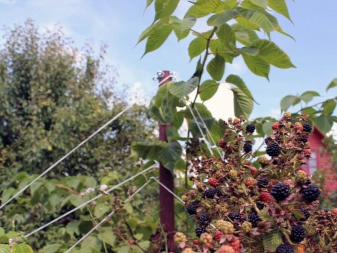
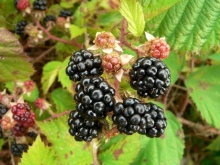
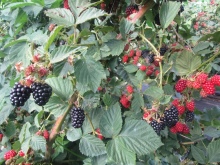
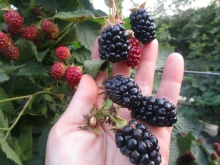
Erect blackberry bushes are vaguely similar to raspberry bushes. The stems of plants are located strictly vertically or may bend slightly downward. Reproduction is carried out by root cuttings. The maximum shoot size is up to 3 meters. Branches and stems are strewn with thorns. Working with such a plant requires thorough preparation and the presence of gloves.
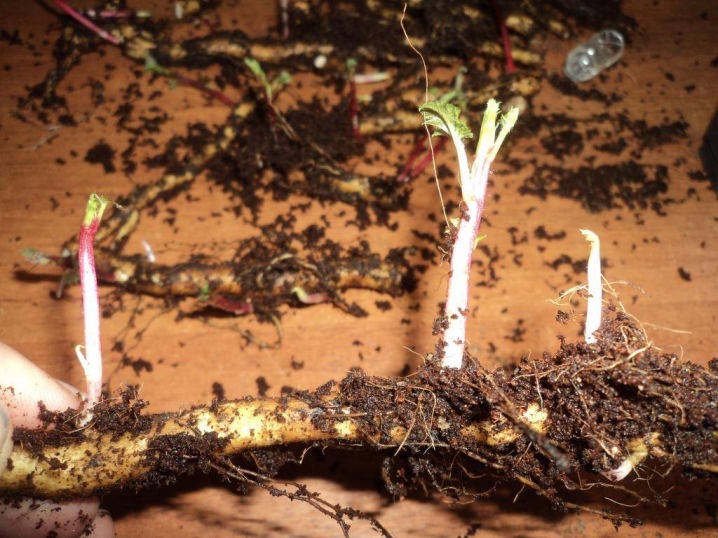
A two-step scheme for beginners for pruning kumanik is as follows.
- In early June, a few centimeters should be removed from the tops to strengthen the branching.
- When the shoots reach a height of more than 80 cm, it is necessary to pinch their upper part. This usually takes place at the beginning of the second half of July.
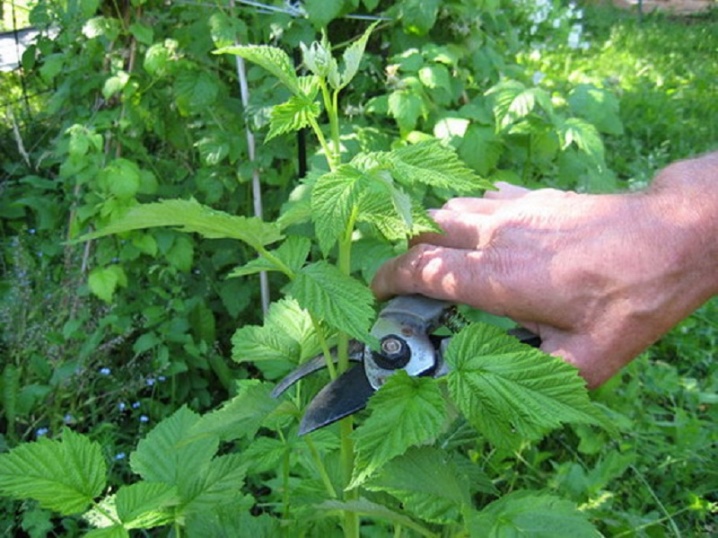
The second variety of blackberry shrubs (sundew) strongly resembles wild plant varieties with a large number of creeping branches of impressive length. Their reproduction is carried out by dropping shoots. The plant can be with or without thorns. The rules for caring for a smooth variety of blackberries are simple. The sundew has an incredibly reduced level of frost resistance.
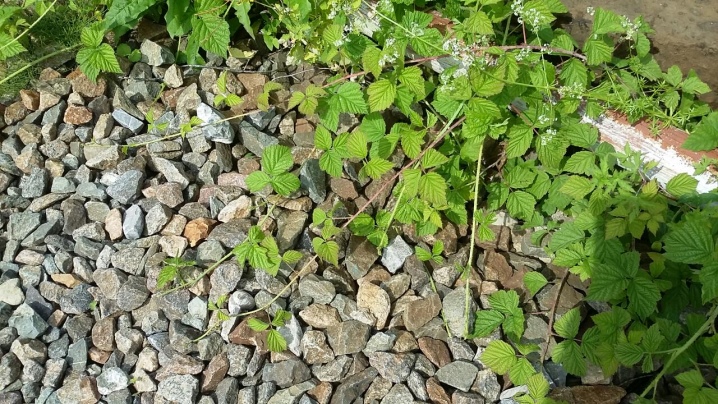
In terms of the amount of the harvested crop, it surpasses kumanik.
Popular creeping blackberries:
- "Texas";
- Natchez;
- Thornfree;
- Logan;
- Lucretia.
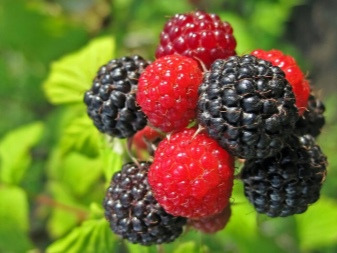
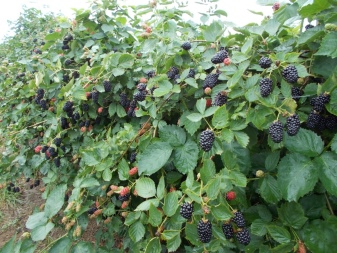
Often it is the shape that determines the nature of the formation of the shrub. It is important to study the characteristics of each bush. There are 2 main ways of forming: rope and fan.
Fanny
An excellent option for upright type of shrubs. With the help of a trellis, the branches of the previous season are fixed in an upright position, while the young shoots are laterally in a horizontal position. With the arrival of autumn, such a garter provides direct access to the old branches in the center to be removed.
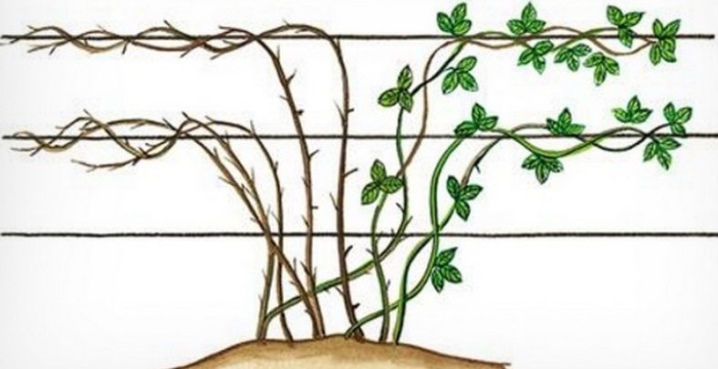
Young shoots in this position are conveniently prepared for long wintering.
Additionally, the landed branches are covered with agrofibre or tarpaulin in order to keep warm in winter. With the beginning of spring, you can remove the insulation, examine the branches and save the 10 strongest ones, removing the rest. With the arrival of heat, the branches, which will acquire elasticity, can be installed in an upright position.
Cable
This type of processing is intended for the formation of creeping plant varieties. Since the branches of the shrub have a very high level of flexibility as well as a long length, this is the best way to form. After wintering, the branches are distributed along the wire on one side, and young shoots on the other, reeling on the wire. In the fall, the old twigs are removed. Due to the distribution in two parts, old twigs can be cut off without damaging the young shoots. The remaining elements are studied in detail in order to remove weak and damaged ones, preserving at least 7-8 strong shoots. Such shoots are collected in a trench, after which they are insulated with a special material.
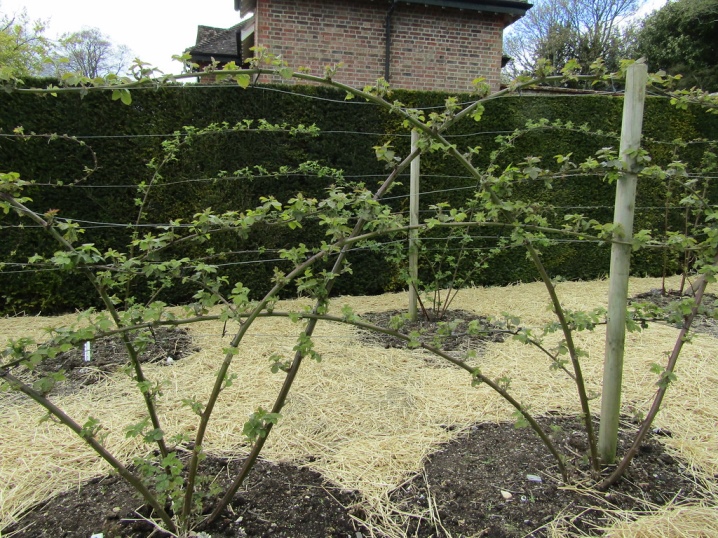
In the spring of each year, in order to increase the yield, it is important to pinch the top of the kumanik shoots. This promotes the growth of the lateral branches of upright varieties. Pruning creeping varieties is required to control branch size. Without such pruning, in the fall, the shoots will reach enormous sizes and occupy a large area, complicating the autumn processing procedures. Another difficulty with long branches is the presence of problems with insulation for the winter period.
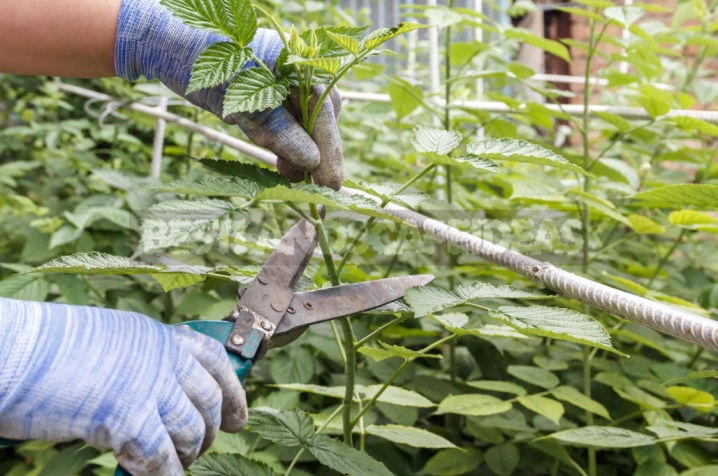
For information on how to prune blackberries in the spring, see the video below.













The comment was sent successfully.